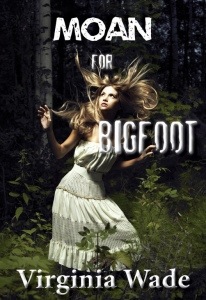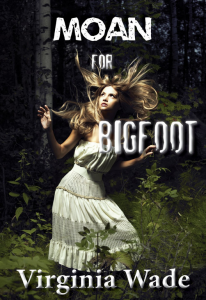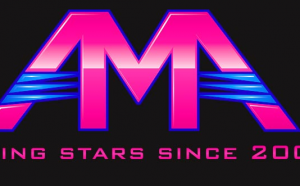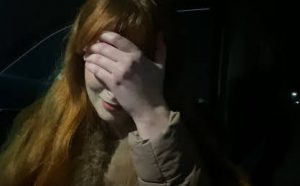“What does woman want?” Freud once whined. Turns out quite a few women want fantasy sex with T. rex, Sasquatch or a boar-headed god. That, at any rate, is the implication of “monster porn,” which serves up X-rated versions of such demure classics as Leda and the Swan, King Kong or Beauty and the Beast.
Also known as “cryptozoological erotica” or “erotic horror,” monster porn has flourished in the Internet era, which offers abundant platforms for self-publication. According to a report in Business Insider, some authors—most apparently female–are making serious moola peddling tales of humans—most apparently female—coupling with “creatures of every possible variety, from minotaurs to mermen, cthulhus to leprechauns, extraterrestrials to cyclops.”
Prudes have attacked monster porn for promoting sexual violence and bestiality. In response, Amazon and other purveyors have at least temporarily blocked access to some e-books, like a popular series featuring Bigfoot. Defenders of monster porn accuse Amazon of inconsistency, noting that the company still offers works of the Marquis de Sade, who extolled the joys of sexual torture and murder.
Trying to explain monster porn’s appeal, freelance writer Bonny Burton, host of the “Vaginal Fantasy Book Club,” writes: “Regular male characters in romance books tend to be over-the-top perfect glistening warriors and knights, but I want an imperfect monster who needs love to show that he can be just as sweet as his human competition… Why deprive the imagination of a great romance just because the protagonist happens to live for 600 years or has the occasional bout with fleas?”
Here’s what I love about monster porn: It’s a wonderfully wacky reminder that human sexuality is too weird, wild and woolly to be captured by modern science, and especially by theories that reduce our behaviors to genes.
Take, for example, evolutionary psychology, which seeks to find some adaptive purpose—adaptive for our Paleolithic ancestors if not for us–underpinning our thoughts, emotions, actions. Evolutionary psychologists assume that everything we do and feel must in some direct or indirect way promote our genes’ perpetuation (or have promoted it in the past). Evolutionary psychology is hard-pressed to explain homosexual lust, let alone lust for Godzilla.
Another popular bio-paradigm is behavioral genetics, which attempts to link specific traits to specific genes. The behavioral geneticist Dean Hamer claims to have discovered a gay gene, but this assertion–like virtually all those emanating from behavioral genetics—has not held up to scrutiny.
The key to our sexual tastes, Scientific American columnist Jesse Bering, my favorite sexologist, proposes, may lurk not in our genomes but in our childhood experiences. That, of course, is a foundational assumption of psychoanalysis, the steampunk theory of human nature devised by Freud more than a century ago.
In spite of his flaws and confessed befuddlement in the face of female desire (he once called it a “dark continent”), Freud offered far more insight into the twisted contours of sexuality than evolutionary psychologists and other genophilic modern scientists. He recognized that our desires are all tangled up with our fears.
In essays such as “The Uncanny” and “Medusa’s Head,” Freud suggested that some men are repulsed as well as entranced by female genitalia, which remind them of castration and death. [*See Postscript on “The Uncanny.”] Wombs morph into tombs. I can’t find it, but no doubt somewhere in Freud’s oeuvre he discusses an analogous female ambivalence toward phalluses.
In her recent essay “Forceful Female Fantasy,” the literary scholar Laura Frost argues that modern scientific investigators of female sexuality—in spite of all their new-fangled instruments and theories–have not progressed much beyond Freud. Science still cannot explain why some women are “aroused by the idea of sex with strangers, dangerous sex and sex between women, men and animals.”
Researchers should supplement their clinical research with investigations of “the immense body of fantasy literature that already gives voice to women’s desire,” Frost says. Science must “open its eyes to culture rather than just confirm what is obvious.”
In other words, as I argue in a recent post, we need the arts and humanities as well as science to understand ourselves. Freud expressed a similar sentiment toward the end of his career. In his 1933 essay “Femininity” he wrote: “If you want to know more about femininity, enquire from your own experiences of life, or turn to the poets, or wait until science can give you deeper and more coherent information.”








What Monster Porn Says about Science and Sexuality: “What does woman want?” Freud once whined. Turns out quite… http://t.co/GzhkQAKNN2
What Monster Porn Says about Science and Sexuality http://t.co/tpyi4BERN5 via @trpwl
RT @TRPWL: What Monster Porn Says about Science and Sexuality http://t.co/3tKK6NGree via @trpwl
What Monster Porn Says about Science and Sexuality http://t.co/3tKK6NGree via @trpwl
Doesn’t surprise me one bit. A lot of women can appreciate a good monster. Even Fay Wray and King Kong had chemistry.